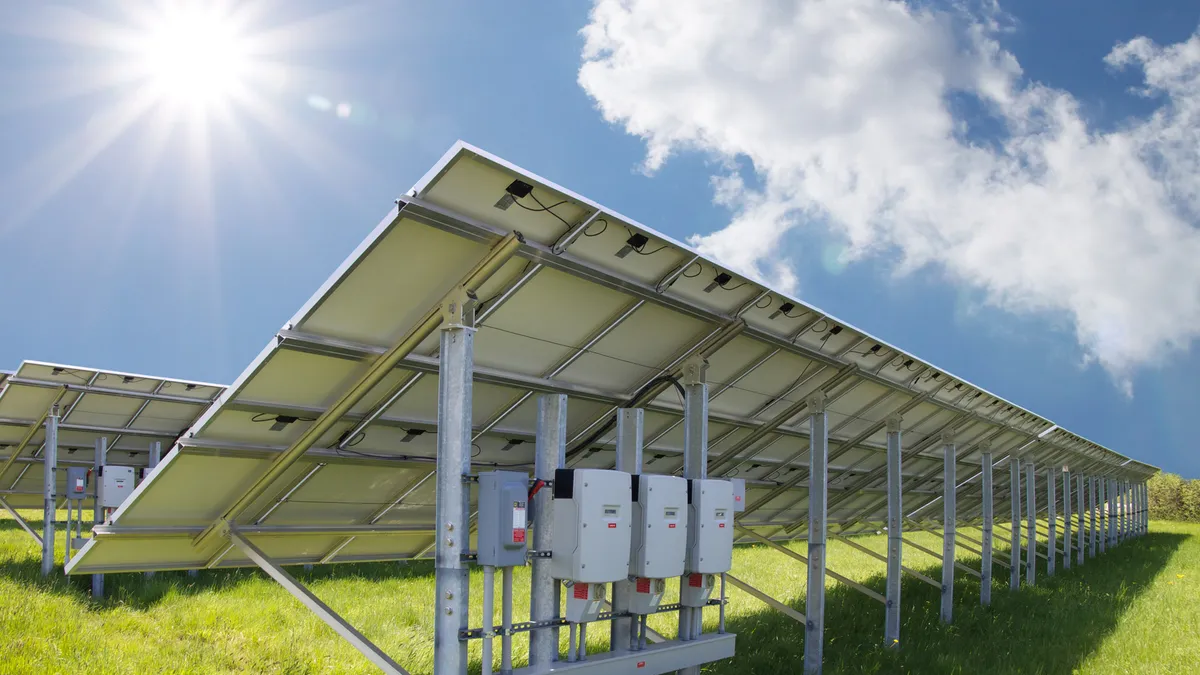Dive Brief:
- Arizona Public Service and Republicans in the state's senate are pushing a ballot initiative that would amend the state's constitution to set a 50% renewables goal by 2030. However, the measure would allow regulators to set the requirements aside should it raise customers' bills or hurt reliability, unlike a competing proposal introduced earlier this year.
- Arizona has already met its 15% RPS standard, and utility energy efficiency targets end in 2020. A ballot initiative backed by super PAC NextGen America and billionaire Tom Steyer would raise it to 50% renewable energy by 2030, but has faced opposition from lawmakers.
- Last week, Arizona Gov. Doug Ducey (R) signed legislation to limit the financial penalty if utilities fail to meet renewables targets, which conservationists argue the law is designed to preemptively subvert voters' clean energy preferences.
Dive Insight:
The potential fight between dueling ballot proposals that appear, at first glance, to be achieving similar goals could morph into a similar battle seen in Florida in the 2016 election. APS is backing an initiative that sets a 50% renewable energy target similar to one already proposed and backed by billionaire Tom Steyer. The difference? The latest one gives utilities and regulators maneuvering room to opt out.
The sponsor, Sen. John Kavanagh (R), told the Arizona Capitol Times “regardless of whom it came from I support it because the voters should have a little more flexibility." In this case, the ability to opt out of the target should it raise bills or impact reliability is key, according to the newest measure's sponsors.
The original initiative's out-of-state support have compelled Republicans to argue that the ballot initiative does not represent the will of Arizona voters, but California interests instead. Supporters of NetGen America's ballot initiative must collect almost a quarter million signatures by July 5 to put the standard in front of voters in November.
APS already admitted to funding a group opposed the first measure and backed recently enacted legislation aimed at softening the financial impact of complying should it be voted into the constitution. APS also proposed hefty new gas-build in its latest Integrated Resource Plan (IRP), which sparked resistance from regulators, who placed a temporary moratorium for nine months.
Concurrently, ACC is considering another measure to adjust the standard and include a carveout for nuclear. Under the commission's proposal, the RPS would rise to 80% by 2050 and require utilities to invest in 3 GW of storage. This could be preferable for APS, which wants to preserve its stake in the Palo Verde nuclear facility. The ACC also wants to do a cost-benefit analysis of all clean energy plans, including the ballot proposals.















